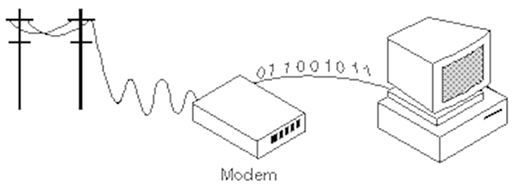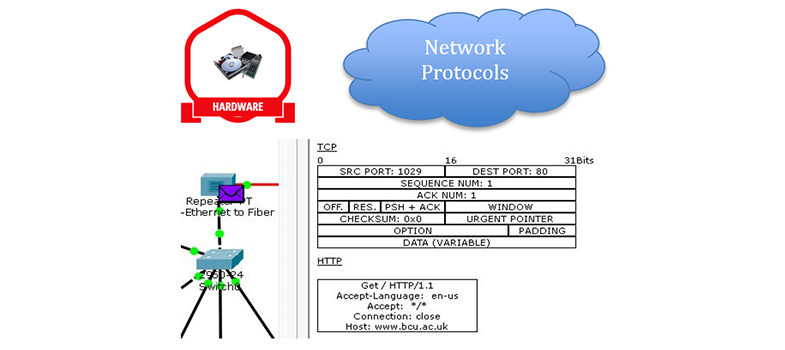7.2.4 Modem
- The function of a modem is to MOdulate and DEModulate data to and from a transmission media. In the early days of the Internet, computers sent binary bits, which alternated between 0 and 5v, towards an ISP using the telephone system, which was (and still is) designed to process audio signals from telephones.
- The modem was required to convert the binary electrical signal from the computer into an audio signal suitable for transmission over the telephone system, and vice versa. So it was used to modulate data onto the phone line, and demodulate data received from the phone line:

Figure 19
- You will not see many individual modems in modern networks as they are now integrated within other devices, such as home routers. They are still needed as home Internet access via Digital Subscriber Line (DSL) utilises the telephone system, albeit using different frequencies. Cable Internet providers also utilise modems, as the binary electrical signal from a computer has to be converted into the radio frequencies used within the cable transmission system.
- There are also some legacy systems that still require modems, such as some older chip and pin systems. Network engineers also use modems as a secret back door into their networks, just in case the main connection fails and they need to remotely find the cause of the issue.
Back to previous pagePrevious
7.2.3 Wireless Access Points (WAP)
